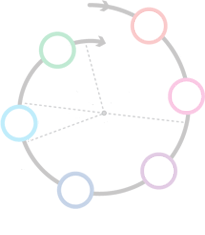
|
Partner(s):
Jeffrey Sachs, Gordon McCord
The Earth Institute, SIPA
Access:
Open to all
Released: March 2008
VIEW PROJECT
|
The Millennium Village Simulation is a web-based simulation of economics and survival for one family and their village in a sub-Saharan African village. In a virtual world of extreme poverty, disease, and environmental variability, students are challenged to help a family of two survive and prosper over a fifty-year period. By making decisions regarding the family's allocation of time and financial resources, students develop a greater understanding of the manifold disciplines -- such as agronomy, nutrition, economics, epidemiology, public health and development management -- that constitute sustainable development and how those disciplines interact with each other in "real world" scenarios. The simulation's creators hope that, by immersing themselves in the daily life of a family, students will identify more deeply with the local experience of extreme poverty.
The simulation was created as a study tool for students in Professor Jeffrey Sachs' undergraduate course Challenges of Sustainable Development, and is freely available to sustainable development practitioners and the general public.
The CCNMTL team spent several months working with Jeff Sachs’ team of doctoral students on the design phase of the Millennium Village Simulation. Take a look at the images and captions below to get some impressions about how the design process went forward:
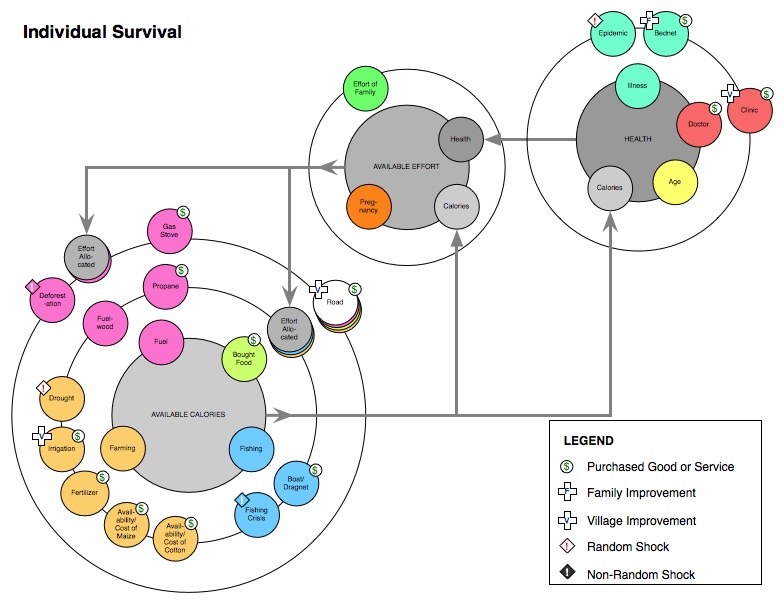 | Figure 1: This diagram is one of the initial models of the network of connections between the different elements and conditions that affect individual survival in the Millennium Village Simulation. Notice how the model not only represents the interaction of controllable factors but also allows for the effect of certain random events. The three circular configurations represent the three key clusters of concern for survival: the first (left) is calories translatable into human energy and possible activity, the second cluster (upper right) relates to health and the third (middle) represents available effort, the effective result of health and calories. Secondarily, there are many conditions that inflect each of the main clusters. For example, health is dependent on the presence of disease and the age of the inhabitants. |
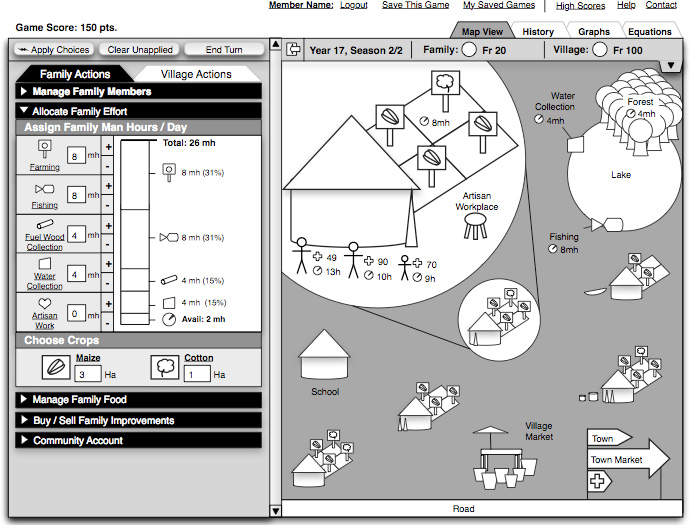  | Figures 2a,b: Moving from the abstract vision of the relationship of the active factors of the simulation to the actual sequence of student activities, the design team decided that the starting place for a student was as a family of two. The choice of the familio-centric view was selected on the basis of the belief that it was important for students to get the perspective from the ground up, that is, from the empathic position of a couple trying to survive with the capacity to make all the same choices available to a real family. Putting students into the position where they are reminded that the issue is sheer physical survival is an important emotional anchor for them when the class discussion becomes more abstract. This screen emphasizes this approach by laying out the possibilities for decision-making for the student regarding food, water, and fuel. This first version done in black-and-white can be contrasted with a subsequent color-version that came later in the process. |
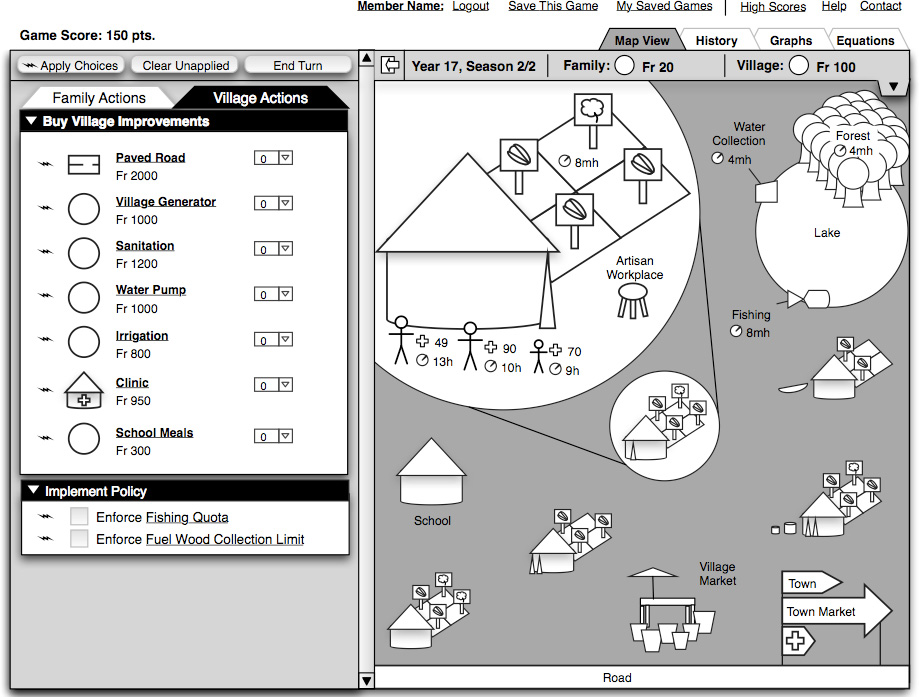 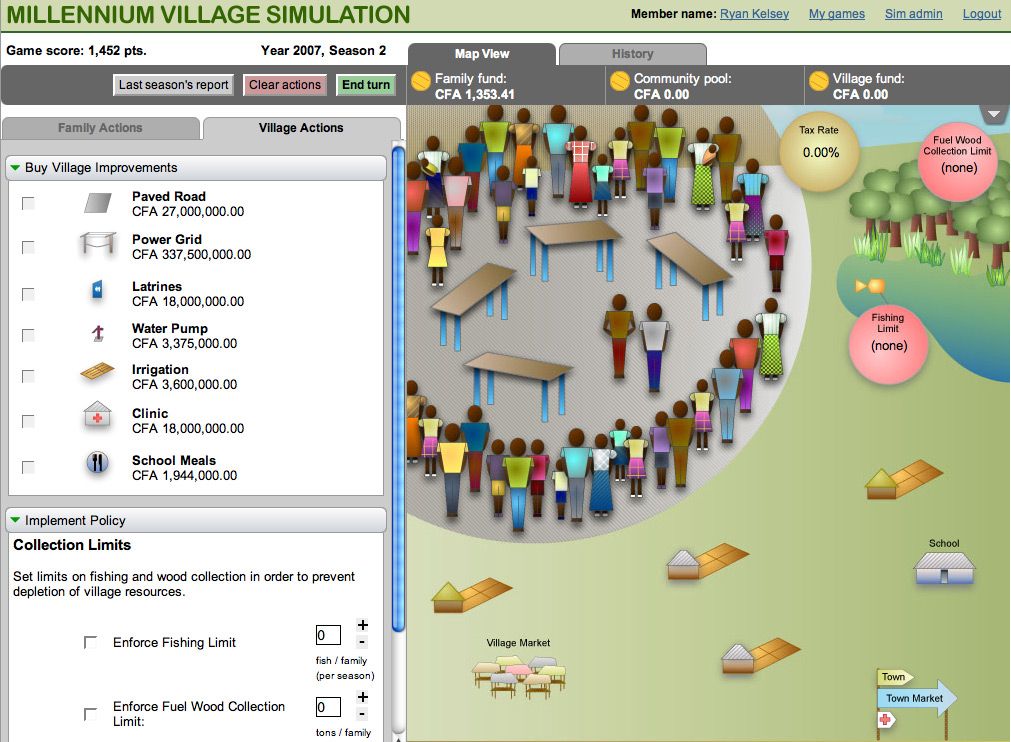 | Figures 3a, b: It was also decided that students would make decisions on both a family level and the larger village level, thus taking on the dual role of village participant and social planner. These two perspectives are intended to help them grasp how economic, climatological and epidemiological changes affect individual families as well as the communities in which they live. Again, two views of the village view are available here, one an early grayscale concept drawing, followed by the fleshed-out color version. |
